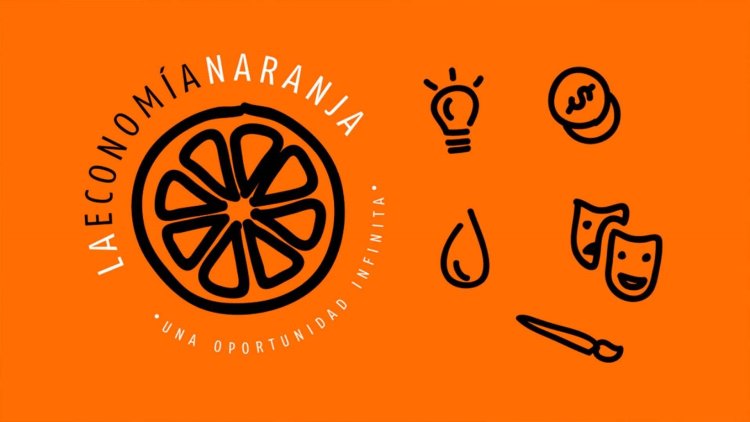The orange economy... creativity makes money

The term orange economy, which is currently used to refer to economic activities related to creativity, was formerly known as the creative industries.
Britain made the first attempt to measure the size of this sector and its direct impact on its economy, in 1998, when the British government published a map in which 13 areas included in the creative economy were included, as areas that depend on individual creativity, skill and talent.

What is the orange economy?
The orange economy is known as the creative and social activity from which its owner earns money and achieves the desired prosperity. It is known among economists in Latin America and the Caribbean by this name.
The orange or creative economy includes cultural industries such as advertising, architecture, art, handicrafts, design, the fashion industry, cinema, music, and theatre, then software, the video game industry, television, radio, and publishing. In Britain, for example, this sector generates job opportunities that are twice the average job opportunities in other activities.
Pillars of the creative economy
The creative or orange economy is based on two fundamental factors, the first and most important of which is the protection of intellectual property. The activities of this economy are a creative intellectual product that may be collective or individual, and in the absence of protection for this product it may lose its economic value.
The observer can notice that cultural and creative products lose their economic value in countries with a low level of intellectual property protection. Books are printed and sold without returning to the author, for example, and films and drawings are copied without considering their intellectual property.
It can be said that protecting intellectual property is the main basis for transforming creativity into an economic product from which creators benefit, and without it, the economic value of creativity collapses.
The second factor is entrepreneurship. Without the commercial aspect, creative works cannot be “rented” and marketed. These works may remain confined to paper, and even the creator himself may not realize the economic value of his works.
Lack of funding is an obstacle to the growth of the cultural economy, as these activities are viewed as risky and volatile. However, many of these activities require initial capital, which constitutes a barrier to entering the market, especially since many of them require infrastructure.

Growth of the orange economy
The orange economy has witnessed remarkable growth in the last two decades, doubling in size between 2002 and 2015 to reach $509 billion, and constituting more than 6% of the global national product, according to data from the United Nations Conference on Trade and Development.
Developing countries have a large share in the growth of the cultural economy, as they contributed about 45% of its trade in 2014 compared to 25% in 2005, but its role in providing job opportunities is not overlooked.
In OECD countries, the percentage of creative economy employees ranges between 3 and 8% of the total workforce, and this percentage may reach 10% in lower-income countries.
The orange economy has a share in the global trade movement. In 2020, global exports of creative goods increased to $524 million from $419 million in 2010, and global exports of creative services increased to $1.1 trillion from $487 billion in 2010, and China was the largest exporter of goods. Creative with a share of $169 billion, followed by America with $32 billion and Italy with $27 billion.
The Middle East
In the Middle East and Africa, this economy employs about 2.4 million people and contributes to more than 30 million jobs globally, most of whom are young people and women.
It provides job opportunities for about two million people in South America, representing about 4% of the gross domestic product there.
New financing methods, such as crowdfunding, can be used to finance creative economy activities, especially since crowdfunding platforms have different standards than traditional banks, including different risk standards between them. The orange economy has benefited from the digital revolution, which has facilitated the access of those interested in cultural goods and services to creative people.


 Shrouq
Shrouq 












